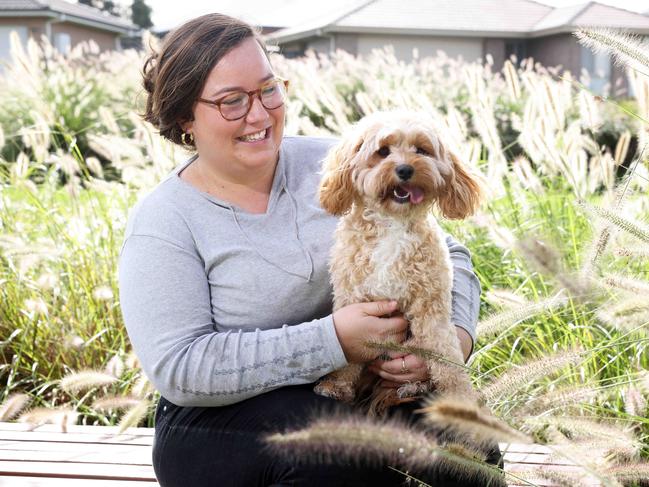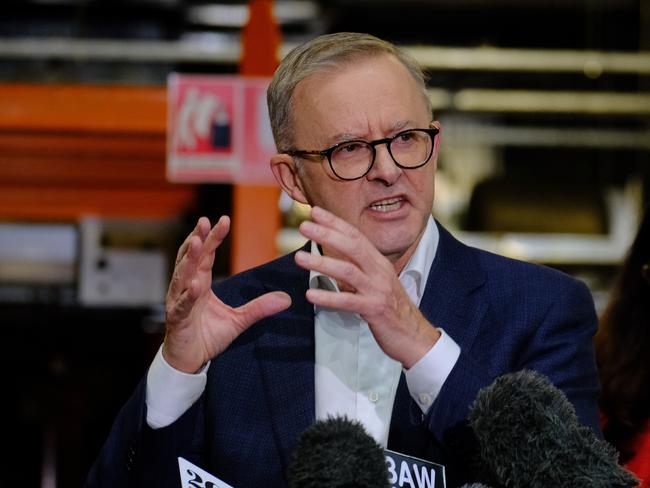What a 5.1 per cent minimum wage increase means for housing affordability in Sydney
Homeownership would remain out of reach for Sydney’s low income earners even if they got a pay rise, with the likely spike in rents also cancelling out any extra money in workers’ pockets.

Homeownership would remain out of reach for Sydney’s low income earners even if they got a pay rise, with the likely spike in rents also cancelling out any extra money in workers’ pockets.
While opposition leader Anthony Albanese has committed to raising the minimum wage by 5.1 per cent in line with the soaring cost of living if Labor wins the election, analysis shows this increase wouldn’t make a significant difference to the housing affordability woes of essential workers and other low income earners.
Even with the increase, single borrowers earning the minimum wage would be limited to properties worth about $200,000 while couples could potentially borrow up to $552,000.
MORE: Reason burnt home with no roof costs $1.7m
Shocking stat shows extent of affordability crisis
Single renters would need to pay less than $217 a week in rent to avoid being in housing stress.

It comes after economists warned increasing the lowest salary by 5.1 per cent could create stronger inflation and further interest rate hikes by encouraging more spending.
But, with rents likely to rise an extra 5 per cent in Sydney this year, tenants on a low income won’t have much extra money to spend.
The minimum wage in Australia is currently $20.33 per hour, which equates to $772.60 per week or $40,175.20 for those working full time.
A 5.1 per cent pay rise would see this increase to $21.36 per hour, $812 per week or $42,224 a year before tax.

Quarterly wage growth figures released on Wednesday showed the Wage Price Index edged 0.7 per cent higher in the first three months of the year, equalling the December quarter.
Annual growth increased from 2.3 per cent to 2.4 per cent.
While much lower than the 5.1 per cent increase to the minimum wage slated by Labor, CommSec reported this was the fastest growth in three years.
Comparison site Canstar calculated the borrowing capacity of a single person earning a full-time minimum wage taking out a 2.98 per cent home loan with a 20 per cent deposit.
The results showed they could borrow up to $171,000 in order to purchase a property.
This increased to $189,000 following a 5.1 per cent pay rise.
A search on realestate.com.au shows the vast majority of properties in the greater Sydney area, including the Blue Mountains and Central Coast, advertised for less than $200,000 are over 50s villas or studio apartments.

While buying a home is out of the question for many low income earners in Sydney, soaring rents could potentially wipe out any extra money earned from a pay increase.
PropTrack head of economic research Cameron Kusher said rents in Sydney were likely to increase by about 5 per cent in 2022.
This would render the extra $40 a week in salary largely inconsequential.
The current rental median in Sydney is $520 based on realestate.com.au data. This equates to more than 67 per cent of the weekly after-tax income of a single person earning the minimum wage.

Housing stress is defined by a household spending more than 30 per cent of their income on housing costs. In order to avoid this, a single renter earning the current minimum wage would need to spend less than $200 a week on rent.
Mr Kusher said this was “pretty much impossible” in Sydney.
“There’s definitely a challenge for essential workers and lower income earners around the rental market in Sydney and that doesn’t look like abating,” Mr Kusher said.
He said there were very few opportunities for those wanting to buy.

“A lot of low income earners feel like they will never be in a position to own a home,” he said.
“The median house price is more than $1m and the median unit price is over $700,000.”
“Even if they could save up a deposit, servicing that mortgage, particularly now as interest rates are going to go up, they just wouldn’t be able to do it.”
But Canstar finance expert Steve Mickenbecker said all hope was not lost.
“Buying into Australia’s booming property market is a stretch for lower income earners, especially as inflation is again rearing its head and the cost of living surges,” he said.

“The 5.1 per cent increase in the minimum wage promised by the opposition will not only assist low income earners to cover burgeoning living expenses, but it may also help them to meet higher loan repayments, lifting the size of loan a couple both on the minimum wage can repay by $36,000 to $552,000.”
He said there were still pockets in Sydney that fell well below the median.
“These give the opportunity for a first foray into the property market for lower wage earners. Upgrading can be something for down the track.”

Mortgage broker Aidan Hartley from Blue Owl Finance said the minimum expenditure used by lenders to assess borrowing capacity had increased exponentially compared to income over the past 12 months.
This meant that even if a borrower was living frugally, they would be assessed based on the amount the bank deemed appropriate compared to income.
“It (a 5.1 per cent wage increase) is not going to do much, especially as rates go up,” he said.
He said he rarely receives home loan inquiries from those on the minimum wage unless they are partnered to a high income earner.
Impact of 5.1% Wage Increase on Borrowing Power
Gross Annual Income (single person) – $40,200
Borrowing Power – $171,000
Min Wage After 5.1% Increase – $42,200
Borrowing Power – $189,000
$ Difference from Min Wage – $18,000
% Difference from Min Wage – 10.5%
Gross Combined Annual Income for Couple (2x Min Wage) – $80,400
Borrowing Power – $516,000
2x Min Wage After 5.1% Increase – $84,400
Borrowing Power – $552,000
$ Difference from Min Wage – $36,000
% Difference from Min Wage – 7.0%
Source: www.canstar.com.au – 11/05/2022. Calculated using Canstar’s Home Loan Borrowing Power Calculator. The calculations assume an interest rate of 2.98% (average owner occupier, P & I, variable rate), loan term of 30 years, annual expenses of $16,500 for a single and $20,580 for a couple, 80% of income available to service a home loan, and 3% interest rate buffer. All input and output figures of the calculator are rounded to the nearest $100. Annual minimum wage based on national minimum wage of $772.60 per week.
MORE: Home sale losses a sign of things to come
Is this Sydney suburb immune to the property downturn?
Where Aussies moved during the pandemic property boom
Originally published as What a 5.1 per cent minimum wage increase means for housing affordability in Sydney
